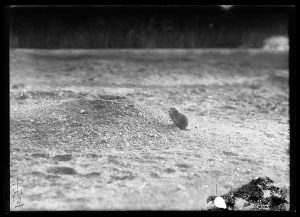We all have our biases, whether we want to admit it or not. Having worked with Native nations for over thirty years, when the current cohort of teachers in our Teaching with Primary Sources project (yes, you can still join) wanted to do a game centered around the Lewis and Clark expedition, I had some mixed feelings about that.
So, why were they important?
Obviously, Merriwether Lewis and William Clark were not the first people to see prairie dogs or pronghorn antelopes, when Native Americans had been living in what is now the western United States for thousands of years. They weren’t the first people to come to that region.

Today, I was discussing that exact question with a member of the cohort, and he made this comment
“The opportunity the past gives us is to ask questions.”
– Mo’ke Ka’āpana, Hawaii
It occurred to me that two things can simultaneously be true, that the Lewis and Clark expedition did not have a good result for the Indigenous people and their accomplishments were still notable.
Emphasize that Lewis & Clark were mapping and documenting the land for U.S. purposes, not “discovering” it. Include missions like cataloging plants and animals, understanding river systems, and learning about how Indigenous trade works. Allow players to switch between perspectives, such as Lewis & Clark and Sakajawea and other Native guides, to deepen understanding of the era.
– Nicole Morrison, North Dakota
I like that perspective and it was similar to what others in the cohort and suggested.
One important thing that Lewis and Clark did was document and map the western United States for people who had never been there, and might never go.
Have you ever heard of Neil de Grasse Tyson (he didn’t discover physics) or David Attenborough (he didn’t invent biology) or Carl Sagan (he didn’t found astronomy). If you haven’t heard of any of those names, as soon as you finish this blog post, get on line or check out a book and learn from some of those scientists.
If you lived in 1800, how would you learn about the world beyond your immediate area? You didn’t have internet or TV, you certainly couldn’t drive or fly there. Lewis and Clark shared information about the natural world, and the Indigenous peoples of America.
They didn’t just share knowledge about plants and animals in the west, they created it.
They also looked at the plants and wild life native to the area in a different way.
Going way back, have you heard of Carl Linnaeus? Carl Linnaeus is why you are called Homo Sapiens. Yes, okay, maybe I was a dork as a kid because I thought a Swedish taxonomer from the 1700s was really cool. What Linnaeus did was look at the species we already knew about in a different way. He divided everything into kingdoms of plants, animals and minerals. He gave each species a two-level name, like Homo sapiens. The first name is the genus, or the larger group it belongs to, and the second name is that specific species. For example, the black-tailed prairie dog’s scientific name is Cynomys ludovicianus .
What does all of this have to do with the Lewis and Clark expedition?
People who did not already live in the American west knew very little about it. What kind of animals lived there? President Thomas Jefferson thought that maybe there were wooly mammoths. (Spoiler alert: There were not.) The biological collecting and recording that was done (mostly by Lewis) added to the scientific knowledge of the flora and fauna of the U.S. Nicole’s idea of cataloging plants and animals and the suggestions from several teachers that students do journaling as an activity, I think fit right in here.
And, regardless of the positive and negative impacts of their expedition, even if you’re carrying a blunderbuss, going into an area where you had no idea what was facing you in terms of predators and only a vague idea of the terrain, did take uncommon courage.


Lewis and Clark only missed the woolly mammoths by THAT much. (Well, maybe by about four thousand years or so, and of course they’d have required a detour to Alaska to see any.) Apparently there were still some poking about when the Great Pyramid was being built, though they didn’t bother to help out.
The expedition was a failure by Hollywood film epic standards, as the explorers only had one Indian fight — not involving the deadly repeating air rifle they’d brought along — and only one man of the Corps of Exploration died (of illness).
In the book “The Last of the Mountain Man,” a 1960s mountain man/hermit expresses the thought that before they set out on their trip, somebody should have told Lewis and Clark how to spell. He cites one passage from their journals’ in which a bear’s actions and intentions are addressed, but with a word that nobody can decipher. “Now the thoughts of that bear are lost forever.” Sad!
There is a lot written about the spelling in their journals. Clark had no formal education, as this was before there were public schools in the U.S. Lewis studied with a tutor for five years before he got called back home to help manage the plantation. That book sounds like a good read. Would you recommend it?